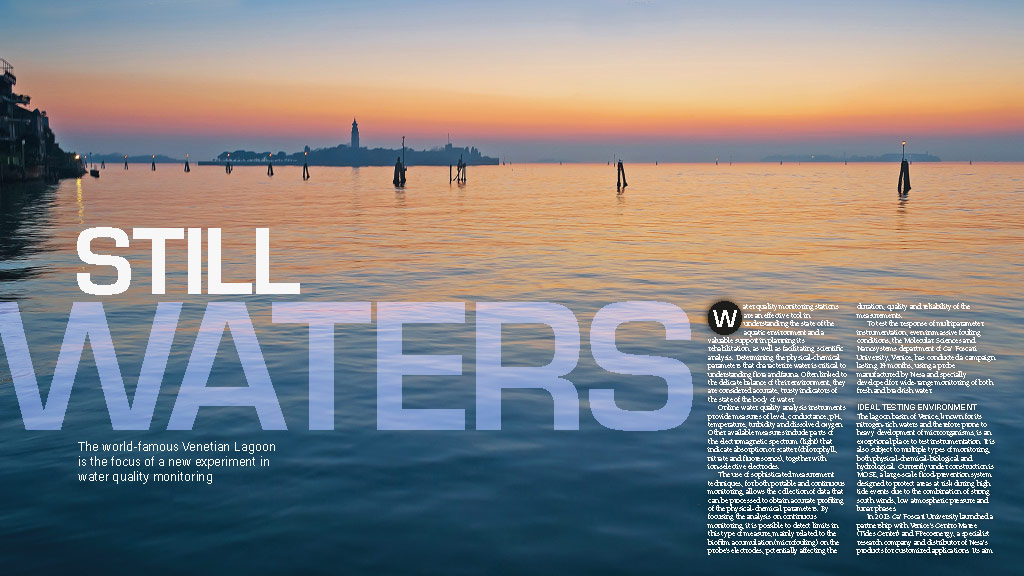Water quality monitoring stations are an effective tool to knowledge of the state of the aquatic environment and a valuable support of planning its rehabilitation, as well as to allow scientific analysis by organizations and institutions primarily involved in this sector. Determining the physical-chemical parameters that characterize water is critical to know flora and fauna, often linked to the delicate balance of the environment that welcomes them, as trusty and accurate indicators of the state of the water body.
On-line water quality analysis instruments normally provide measures of level, conductance, pH, temperature, turbidity, dissolved oxygen. More available measures include particles of electromagnetic spectrum (light) that indicate absorption or scatter (chlorophyll, nitrate and fluorescence) together with ion-selective electrodes (ISEs).
The use of sophisticated measurement techniques, both for portable and continuous monitoring, allows the collection of data that can be processed to obtain accurate profiling of the physical-chemical parameters; by focusing the analysis to continuous monitoring, we can detect limits in this type of measure, mainly related to the biofilm accumulation (“microfouling”) on the probe’s electrodes, potentially affecting the duration, quality and reliability of the measurements.
In order to test the response of multi-parameter instrumentation, even in massive “fouling” conditions, the Molecular Sciences and Nanosystems Department of Ca’ Foscari University – Venice has conducted a campaign lasting about 14 months, using a probe manufactured by Nesa Srl and specially developed for wide range monitoring of both fresh and brackish water.
The results of data inter-comparison between 2014 and 2015 tendencies and the great reliability of Nesa probes have been published as scientific article on METEOROLOGICAL TECHNOLOGY INTERNATIONAL SEPTEMBER 2017 and made worldwide available to thousands of researchers.

